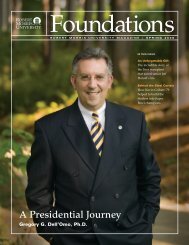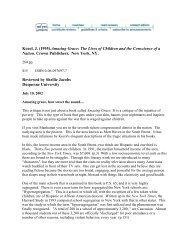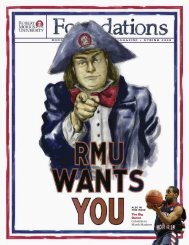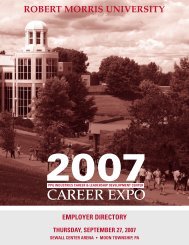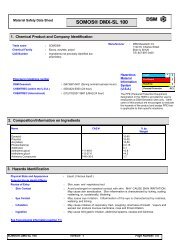Spring 2007 - Robert Morris University
Spring 2007 - Robert Morris University
Spring 2007 - Robert Morris University
- No tags were found...
Create successful ePaper yourself
Turn your PDF publications into a flip-book with our unique Google optimized e-Paper software.
GREG HILES + STUDENT IN THE B.S.N. PROGRAM<br />
CARLEEN MARKIVICH ‘07 + GRADUATE OF THE B.S.N. PROGRAM<br />
PROFESSOR OF NURSING<br />
CARL ROSS, PH.D., CRNP, CNE +<br />
<strong>Robert</strong> <strong>Morris</strong> <strong>University</strong>’s School of Nursing is emerging as<br />
a regional and national leader in addressing these critical<br />
shortages. This fall, the <strong>University</strong> is launching a Doctor of<br />
Nursing Practice degree program, the first such program to<br />
gain approval from the Pennsylvania State Board of Nursing.<br />
Nationally, only a handful of universities offer D.N.P.<br />
programs. And Lynda Davidson, Ph.D., RN, dean of RMU’s<br />
School of Nursing, is helping to draft the accreditation rules<br />
that will shape doctoral education for nurses across the<br />
country in the coming years.<br />
Primary care physicians have traditionally served several key<br />
roles in the health care system. They are a major source of<br />
health and wellness information. They help chronically ill<br />
patients manage their conditions. And they act as a sieve for<br />
the rest of the health care industry, sifting out and treating<br />
patients with common illnesses and sending those with more<br />
complicated diseases on to the appropriate specialist.<br />
Pennsylvania’s shortage of primary care physicians stems<br />
from several factors. The state’s roughly 32,000 physicians<br />
are nearing retirement, and as they get older, they work<br />
fewer hours. The effect on doctor productivity is equivalent<br />
to losing 4,000 full-time physicians, according to research by<br />
Stephen Foreman, Ph.D., associate professor of health care<br />
administration and economics at RMU. Additionally, doctors<br />
are facing declining insurance reimbursements and escalating<br />
costs for malpractice insurance. Pennsylvania malpractice<br />
rates are up to five times higher than those in neighboring<br />
states. To help pay the bills, physicians are increasingly<br />
gravitating toward more lucrative specialty practices such<br />
as cardiology, orthopedics and internal medicine.<br />
Compounding the problem is a shortage of nurses at all<br />
levels of practice. If current trends don’t change, the U.S. will<br />
be facing a projected 29 percent shortfall in registered nurses<br />
by 2020. Nurse practitioners are also in short supply, and the<br />
country needs to add 3,400 each year for the next 13 years.<br />
Pennsylvania needs up to 930 more nurse practitioners per<br />
year to help make up for its deficit.<br />
Faced with this understaffing crisis, the health care industry<br />
is looking to nurse practitioners as a means to increase<br />
efficiency, improve care and reduce the number of nurses<br />
ROBERT MORRIS UNIVERSITY FOUNDATIONS • 13







